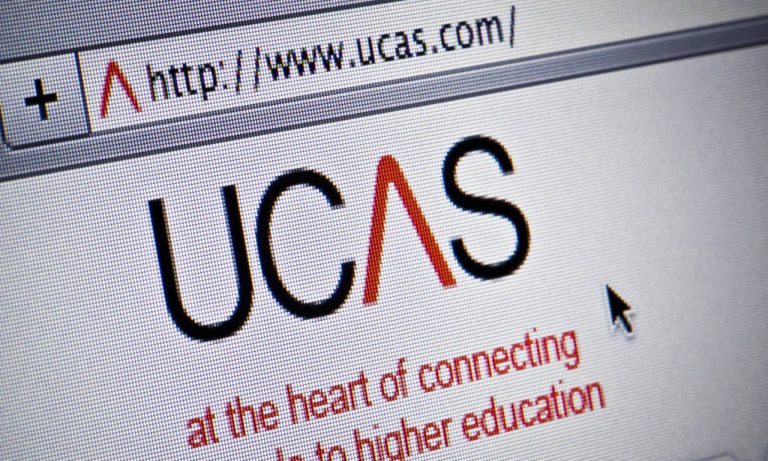
There’s no two ways about it — during the long and sometimes arduous process of preparing to study abroad, actually getting down to applying is probably the most nerve-racking part. Between hours of research and endless prospectus downloads, you’ve finally decided which course you’d like to study, now it’s time to knuckle down and make it happen. But as far as the actual application process goes, if you take it step by step there’s no reason to feel intimidated. In fact, it’s actually quite straightforward. This is where UCAS comes in.
Whether you’re a home or international student, if you’re looking to apply for an undergraduate (and sometimes postgraduate) degree programme in the UK, you’ll need to do so using UCAS- the Universities and Colleges Admissions Services.
What is UCAS?
UCAS is a centralised application system that allows you to find and apply for up to five university courses that you’d potentially like to study. Once you’ve successfully lodged your application with UCAS, they will forward a copy to all of your chosen universities. Whether you’re successful or not, you will be able to take the next steps through UCAS, too.
Via UCAS.
What are UCAS points?
Because UCAS is a centralised system, it needs to have a standard way of gauging which students are the best fit for each course. This standard way is the UCAS points system, which allocates points to qualifications that you’ve already obtained past the age of 16, or are expecting to obtain once you graduate (these are called ‘predicted grades,’ and there is a space for you to enter them in on the application form, too). The amount of points you are allocated will be considered in your application, against the points requirement for the course you’re applying to.

Via Coral.
To find out how many UCAS points you’ll be awarded, you can check against the Tariff Tables on the UCAS website. Some international students may not find their qualification, or a known equivalent to their qualification listed on the tables. Not to worry: in the latter case, you can add in the details of your qualification to your application directly, including the grades you’ve obtained, the name of the country you’ve obtained them in, and the name of your qualification. If the name of your qualification is not listed, add it into the ‘other’ box. In some cases, you may need to send in hard copies of your academic transcripts as verification. In most cases, international applicants will also need to send a copy of their academic transcripts to their host institutions themselves.
It will be up to the university or college to decide whether these grades meet the entry requirements of the course you’re applying to or not.
Applying
You will need to complete and online application that you’ll find on the UCAS website. Depending on the type of course you’d like to do and the specific deadlines for that course, there may be some separate application forms. Remember: UCAS is simply a centralised application service, and the requirements of each university and each of the courses it runs is set by them. UCAS just puts them all in one place for you, and helps manage the application process.
Your application will be made up of the following sections, which we’ll go through in more detail below:
- Personal details
- Preferences
- Existing qualifications
- Employment history (if applicable)
- Personal statement
- Reference
- Payment
Most importantly, you’ll need to fill in your personal details, such as your name, date of birth, country of birth, and so on. This is a standard administrative requirement for anyone hoping to lodge an application.
Next, you’ll need to nominate up to five courses you’d like to apply to. These institutions are called your preferences, but are not considered in preference order. Other universities won’t see where else you’ve applied to until after you’ve replied to any offers that you’ve received. There are a few restrictions on the types of course combinations you’re able to have, but these are few and far between.
As mentioned above, you will need to add in details of your existing qualifications. This will be used to calculate how many UCAS points you’ll be awarded, and whether you meet minimum grade requirements for entry into a given course.
You will also need to write what’s called a personal statement, which is a kind of personal essay that explains a bit about yourself; why you’d like to study the course you’re applying for, the standard of your English language skills, and why you’d like to study in the UK: i.e., why you’d prefer to be an international student rather than study in your home country. This is your chance to ‘sell yourself’, if you like, and let universities know why you’d be such a great student, and why you’d love to study there. Be careful not to use language that is too boastful or elaborate: this is a chance to let your authentic enthusiasm shine, as well as any other qualities you have to be proud of. If you are applying for more than one course through UCAS make sure that you don’t mention any course provider by name, as all the providers you apply to through UCAS will receive the same personal statement.
Then, you will need to attach a reference to your application. How to include your reference will depend on whether you’re applying from a UCAS centre, or are applying independently. If you are applying through a UCAS centre, they will complete the reference for you after you’ve submitted your application. If you’re applying independently, you will need to ask a teacher, or perhaps a current or past employer, to complete the reference for you. You will also need to nominate one or two people that UCAS is able to contact if required.
You will also need to pay an application fee before UCAS is able to send off your application to the host institutions you’ve nominated. After you’ve paid the fee, you can send your application form off to UCAS, who will then pass it onto the relevant universities.
Application deadlines
Applications are subject to vary from year to year, but in 2015 opened from early September. Applications to the University of Oxford and the University of Cambridge are usually due in mid October, but for the majority of UK universities applications will be due in by mid-January. Some art and design courses have a later application deadline: for example, in 2015 a prospective student on one of these courses would have needed to have their application in by March.
What now?
After your application has been sent off to UCAS, you’ll receive an email confirmation which acknowledges they have received it. Copies of your application will then be sent off to the universities and colleges you’ve applied to. Then, you wait.
If you’ve been successful, you may receive what is called either an ‘unconditional’ or ‘conditional’ offer, which you will then need to replay to through a UCAS function called ‘Track.’
If you’ve been unsuccessful, you may be able to continue your application through processes called ‘Extra’, or ‘Clearing’. For more information on what to do after you’ve lodged your application, visit the ‘tracking your application’ section of the UCAS website.
Image via UCAS.








